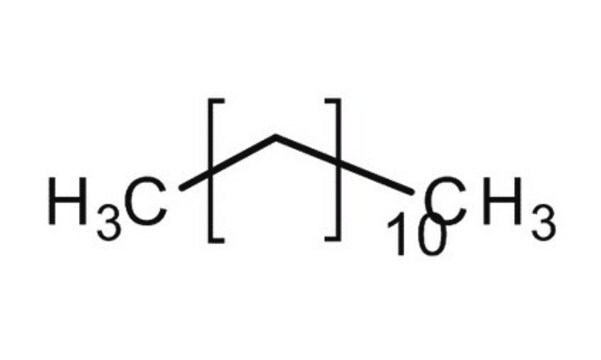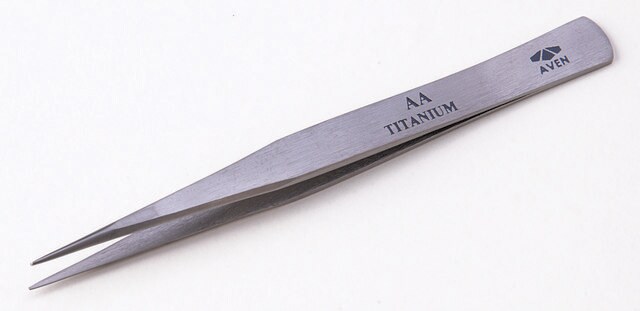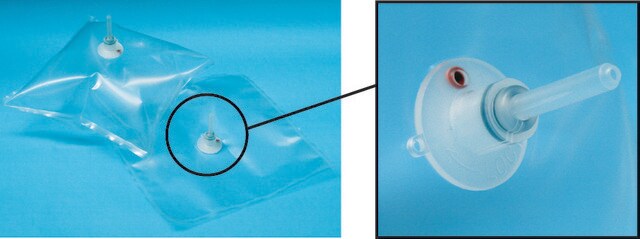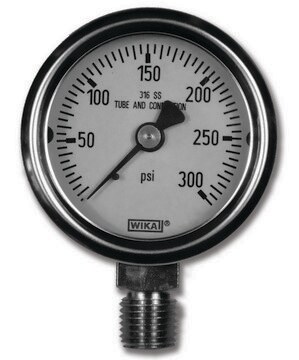D221104
Dodecane
ReagentPlus®, ≥99%
About This Item
Produits recommandés
Densité de vapeur
5.96 (vs air)
Niveau de qualité
Pression de vapeur
1 mmHg ( 47.8 °C)
Gamme de produits
ReagentPlus®
Essai
≥99%
Forme
liquid
Température d'inflammation spontanée
401 °F
Limite d'explosivité
8 %
Technique(s)
microbiological culture: suitable
Indice de réfraction
n20/D 1.421 (lit.)
pb
215-217 °C (lit.)
Pf
−9.6 °C (lit.)
Densité
0.75 g/mL at 25 °C (lit.)
Chaîne SMILES
CCCCCCCCCCCC
InChI
1S/C12H26/c1-3-5-7-9-11-12-10-8-6-4-2/h3-12H2,1-2H3
Clé InChI
SNRUBQQJIBEYMU-UHFFFAOYSA-N
Vous recherchez des produits similaires ? Visite Guide de comparaison des produits
Description générale
Application
- Extraction of hydrocarbons from Botryococcus braunii.
- Pd/C catalyzed deoxygenation of stearic acid to synthesize biodiesel.
- Oxidativede sulfurization of dibenzothiophenes.
Informations légales
Mention d'avertissement
Danger
Mentions de danger
Conseils de prudence
Classification des risques
Asp. Tox. 1
Risques supp
Code de la classe de stockage
10 - Combustible liquids
Classe de danger pour l'eau (WGK)
WGK 1
Point d'éclair (°F)
158.0 °F - Pensky-Martens closed cup
Point d'éclair (°C)
70 °C - Pensky-Martens closed cup
Faites votre choix parmi les versions les plus récentes :
Déjà en possession de ce produit ?
Retrouvez la documentation relative aux produits que vous avez récemment achetés dans la Bibliothèque de documents.
Les clients ont également consulté
Notre équipe de scientifiques dispose d'une expérience dans tous les secteurs de la recherche, notamment en sciences de la vie, science des matériaux, synthèse chimique, chromatographie, analyse et dans de nombreux autres domaines..
Contacter notre Service technique








